Snf7 spirals sense and alter membrane curvature
- PMID: 35449207
- PMCID: PMC9023468
- DOI: 10.1038/s41467-022-29850-z
Snf7 spirals sense and alter membrane curvature
Abstract
Endosomal Sorting Complex Required for Transport III (ESCRT-III) is a conserved protein system involved in many cellular processes resulting in membrane deformation and scission, topologically away from the cytoplasm. However, little is known about the transition of the planar membrane-associated protein assembly into a 3D structure. High-speed atomic force microscopy (HS-AFM) provided insights into assembly, structural dynamics and turnover of Snf7, the major ESCRT-III component, on planar supported lipid bilayers. Here, we develop HS-AFM experiments that remove the constraints of membrane planarity, crowdedness, and support rigidity. On non-planar membranes, Snf7 monomers are curvature insensitive, but Snf7-spirals selectively adapt their conformation to membrane geometry. In a non-crowded system, Snf7-spirals reach a critical radius, and remodel to minimize internal stress. On non-rigid supports, Snf7-spirals compact and buckle, deforming the underlying bilayer. These experiments provide direct evidence that Snf7 is sufficient to mediate topological transitions, in agreement with the loaded spiral spring model.
© 2022. The Author(s).
Conflict of interest statement
The authors declare no competing interests.
Figures

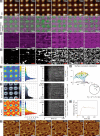
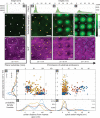

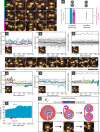
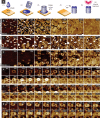
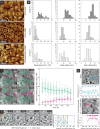
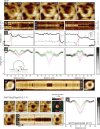
Similar articles
-
Relaxation of Loaded ESCRT-III Spiral Springs Drives Membrane Deformation.Cell. 2015 Nov 5;163(4):866-79. doi: 10.1016/j.cell.2015.10.017. Epub 2015 Oct 29. Cell. 2015. PMID: 26522593 Free PMC article.
-
Structure and dynamics of ESCRT-III membrane remodeling proteins by high-speed atomic force microscopy.J Biol Chem. 2023 Apr;299(4):104575. doi: 10.1016/j.jbc.2023.104575. Epub 2023 Mar 2. J Biol Chem. 2023. PMID: 36870686 Free PMC article. Review.
-
Mechanisms of negative membrane curvature sensing and generation by ESCRT III subunit Snf7.Protein Sci. 2020 Jun;29(6):1473-1485. doi: 10.1002/pro.3851. Epub 2020 Mar 18. Protein Sci. 2020. PMID: 32142182 Free PMC article.
-
Structural basis for activation, assembly and membrane binding of ESCRT-III Snf7 filaments.Elife. 2015 Dec 15;4:e12548. doi: 10.7554/eLife.12548. Elife. 2015. PMID: 26670543 Free PMC article.
-
The signaling mechanism of ambient pH sensing and adaptation in yeast and fungi.FEBS J. 2012 Apr;279(8):1407-13. doi: 10.1111/j.1742-4658.2012.08548.x. Epub 2012 Mar 23. FEBS J. 2012. PMID: 22360598 Review.
Cited by
-
Roles of ESCRT-III polymers in cell division across the tree of life.Curr Opin Cell Biol. 2023 Dec;85:102274. doi: 10.1016/j.ceb.2023.102274. Epub 2023 Nov 8. Curr Opin Cell Biol. 2023. PMID: 37944425 Free PMC article. Review.
-
PDMS as a Substrate for Lipid Bilayers.Langmuir. 2023 Aug 8;39(31):10843-10854. doi: 10.1021/acs.langmuir.3c00944. Epub 2023 Jul 26. Langmuir. 2023. PMID: 37494418 Free PMC article.
-
Mechanism for Vipp1 spiral formation, ring biogenesis, and membrane repair.Nat Struct Mol Biol. 2024 Nov 11. doi: 10.1038/s41594-024-01401-8. Online ahead of print. Nat Struct Mol Biol. 2024. PMID: 39528797
-
Endosomal membrane budding patterns in plants.Proc Natl Acad Sci U S A. 2024 Oct 29;121(44):e2409407121. doi: 10.1073/pnas.2409407121. Epub 2024 Oct 23. Proc Natl Acad Sci U S A. 2024. PMID: 39441629
-
Modelling membrane reshaping by staged polymerization of ESCRT-III filaments.PLoS Comput Biol. 2022 Oct 17;18(10):e1010586. doi: 10.1371/journal.pcbi.1010586. eCollection 2022 Oct. PLoS Comput Biol. 2022. PMID: 36251703 Free PMC article.
References
-
- Semrau S, Schmidt T. Membrane heterogeneity – from lipid domains to curvature effects. Soft. Matter. 2009;5:3174–3186. doi: 10.1039/b901587f. - DOI
Publication types
MeSH terms
Substances
Grants and funding
LinkOut - more resources
Full Text Sources
Research Materials
Miscellaneous

